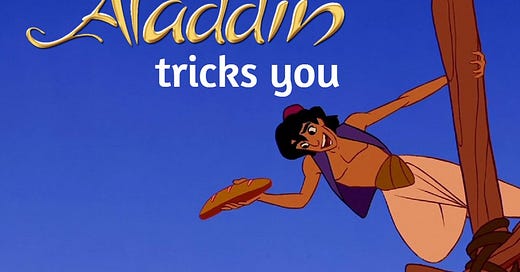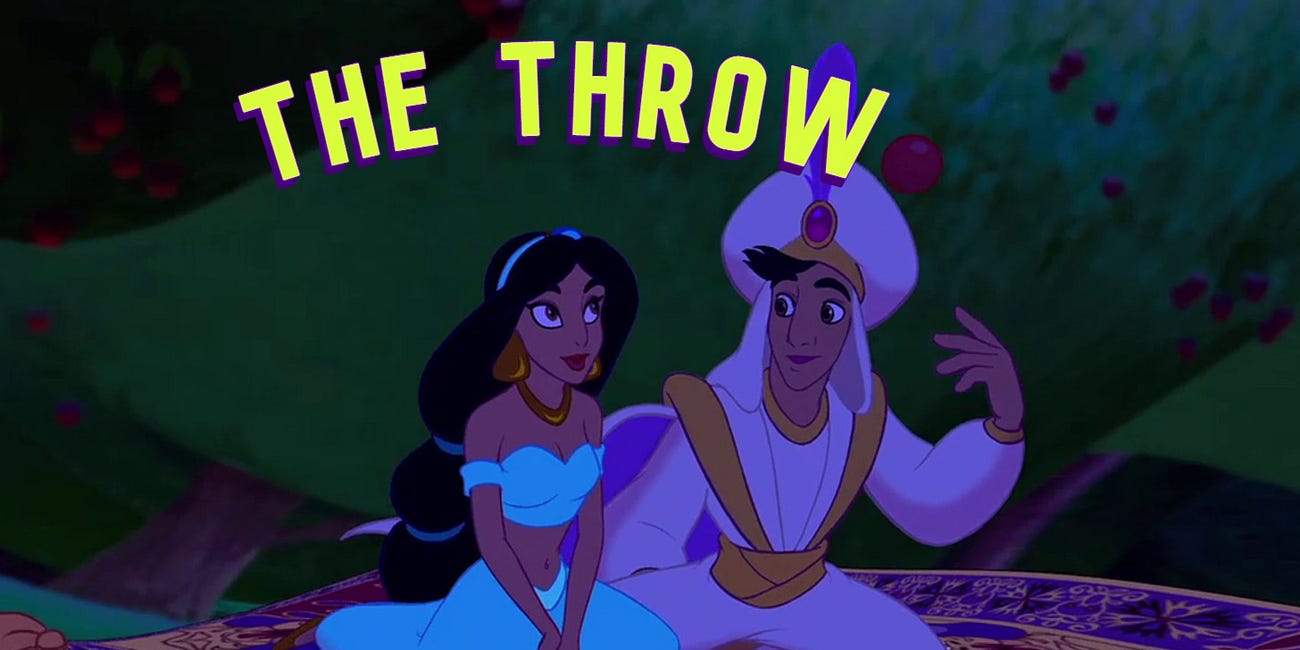How Aladdin Tricks You with Clever Scene Transitions
In which I coin a new, incredibly stupid term
The original Aladdin is one of my all-time favorite animated movies, and I’m sure that’s true for a lot of people. But I noticed something recently while re-watching it with my daughter—the opening sequence is unusual in the way it transitions from scene to scene. Is this a flaw? Or are there good ways to break the rules?
Let’s find out together!
If you can think of a better term than “NNIST,” I’d like to hear it!
Edit: Turns out, there really is a term for non-narrative, inter-scenic transitions: “the throw.” Read more in this update:
The REAL Name for NNISTs
It turns out, I was kinda right in my Aladdin video—there is a term for “non-narrative inter-scenic tethers.”
Sources
Today’s video was inspired by David Bordwell’s article “The Hook: Scene Transitions in Classical Cinema.” As stated in the video, “hook” is an awful name for the technique, but otherwise, it’s a great article.
In it, he mentions Fritz Lang’s M, which is one of my all-time favorites. There are some interesting sound/video transitions in it, but it’s all a little too slow-paced to even sample in a YouTube video.
If you’ve never heard of a “Gilligan Cut,” you should read the extensive TV Tropes page on the subject. It’s a common gag since the beginning of cinema, so their examples page is huge.
There’s also the TV Tropes page for Two Scenes, One Dialogue, their term for the Archer interrogation sequence. It’s a tricky joke to pull off, but when you do, it’s fantastic.




